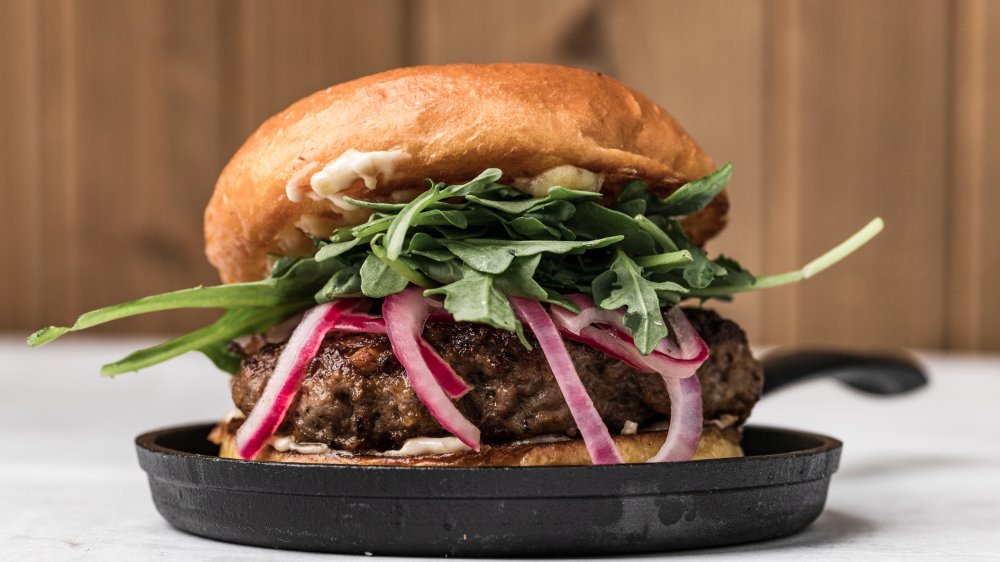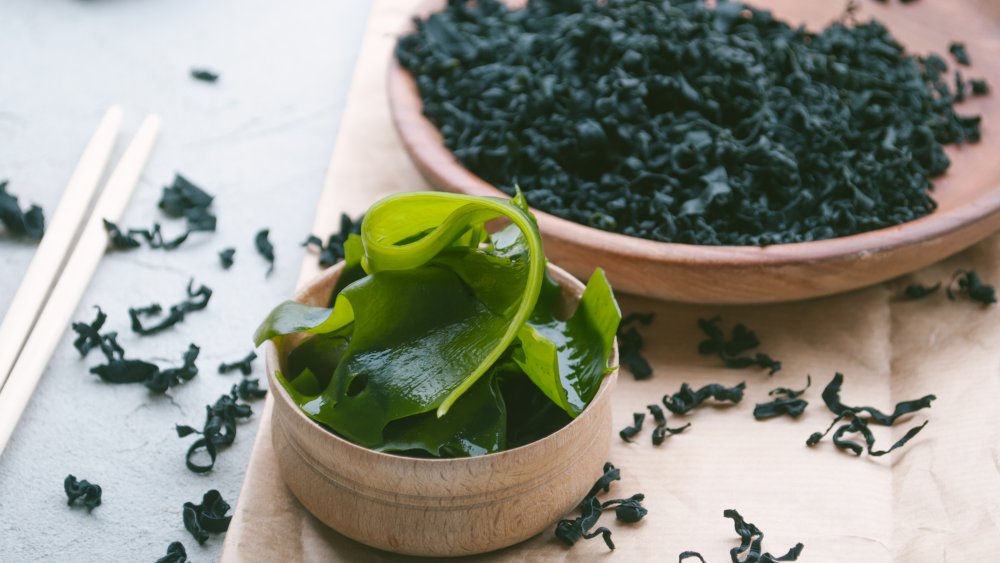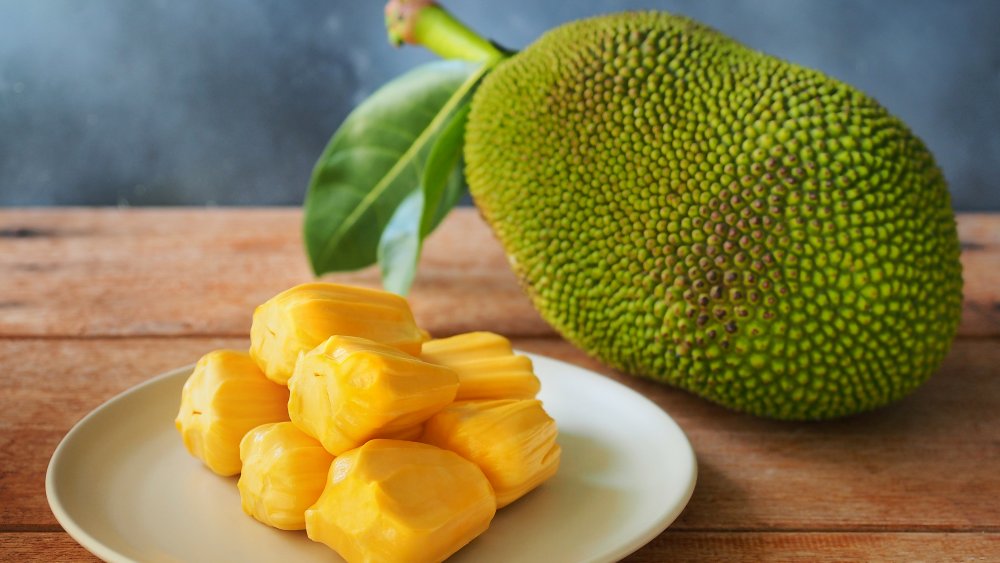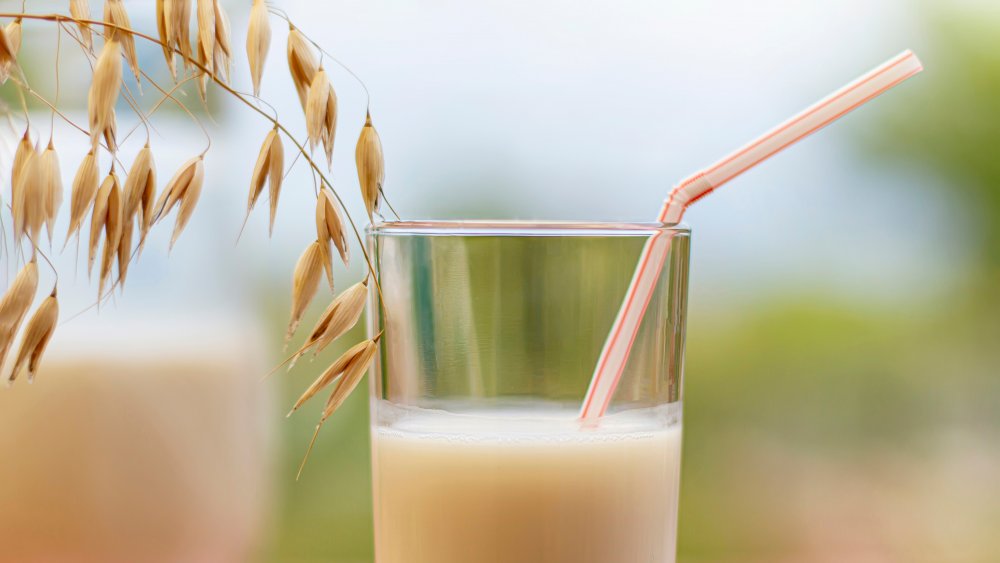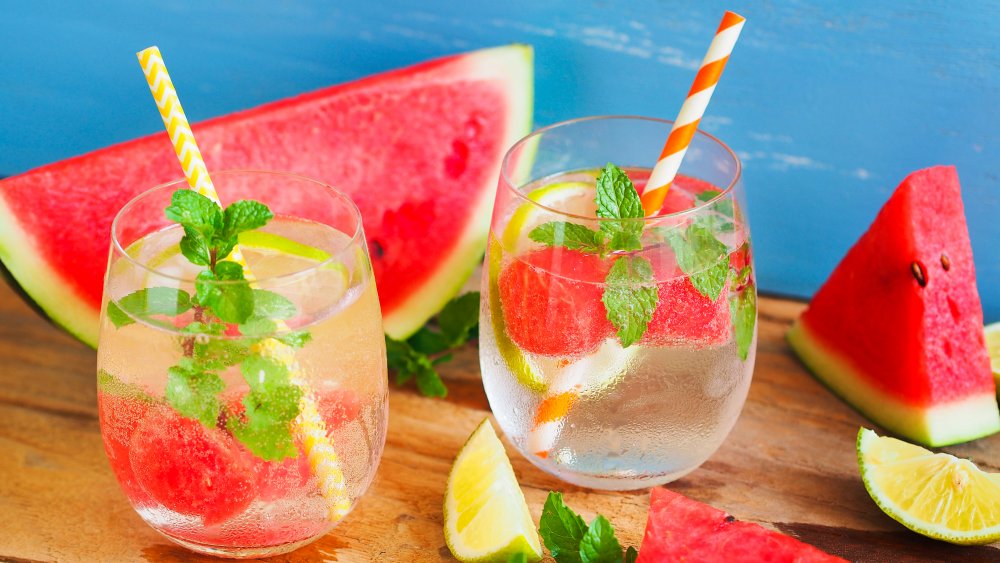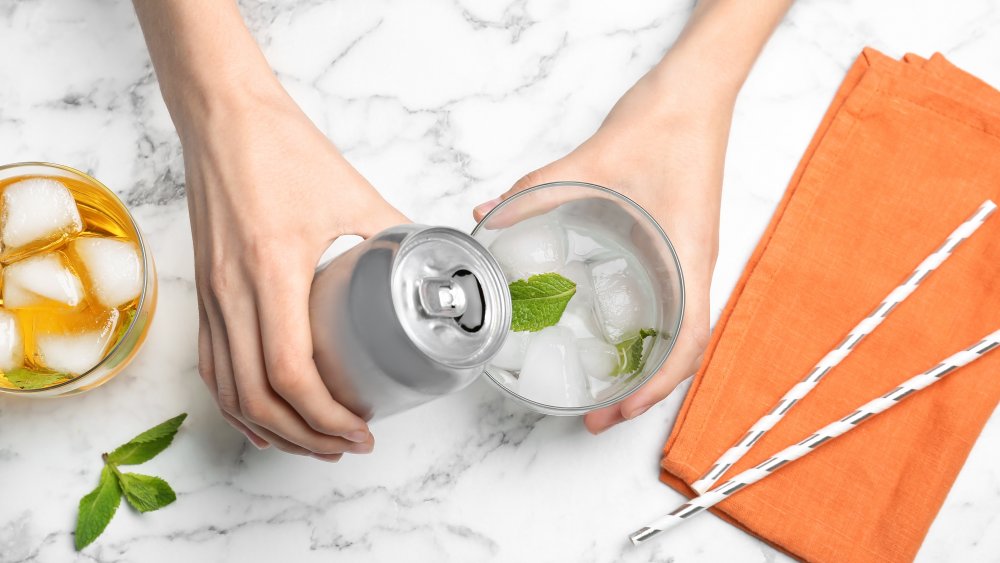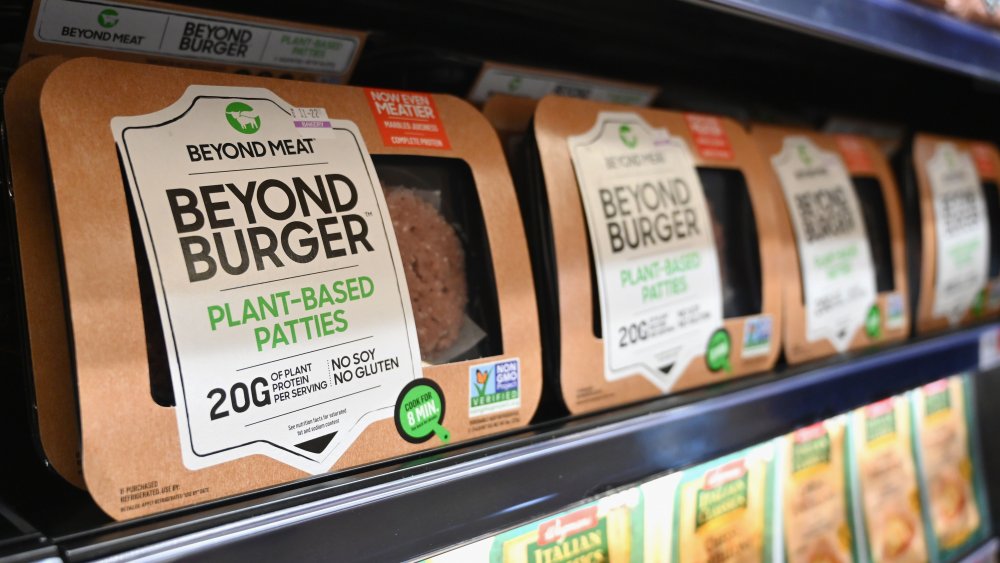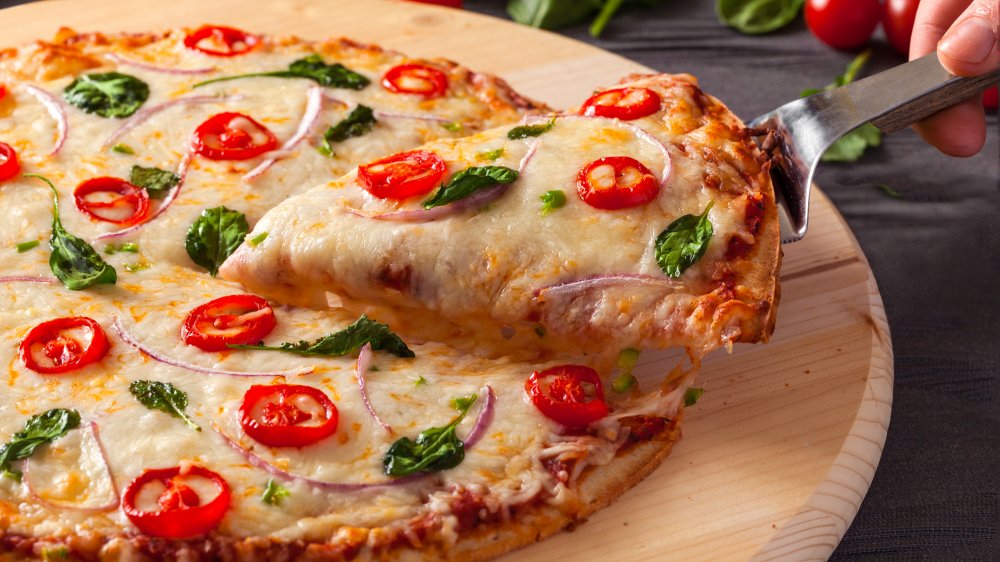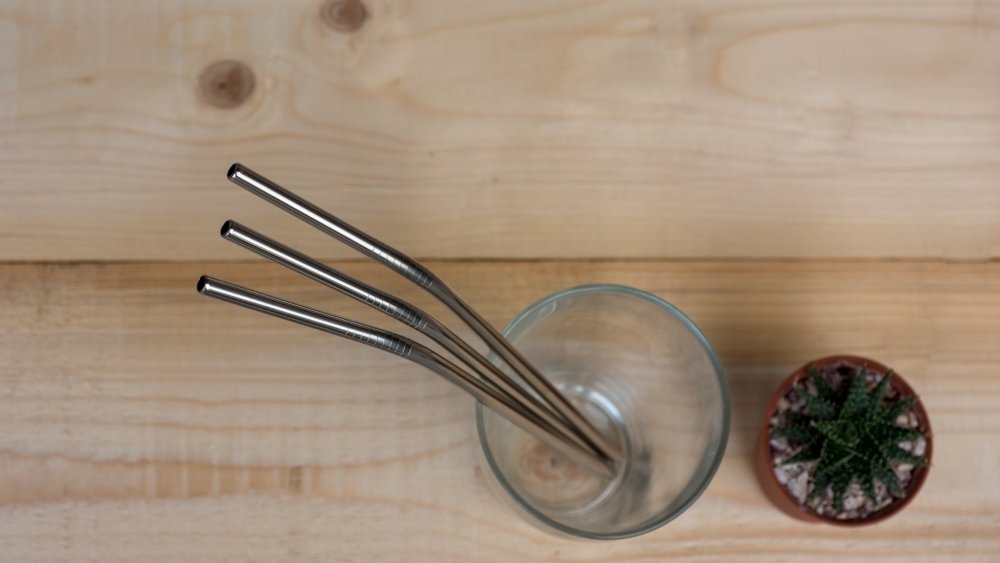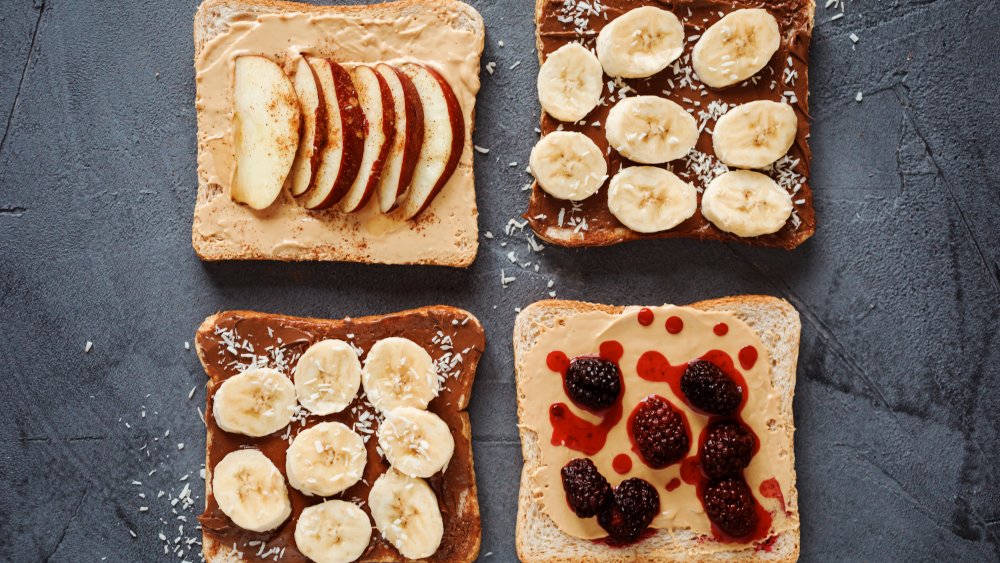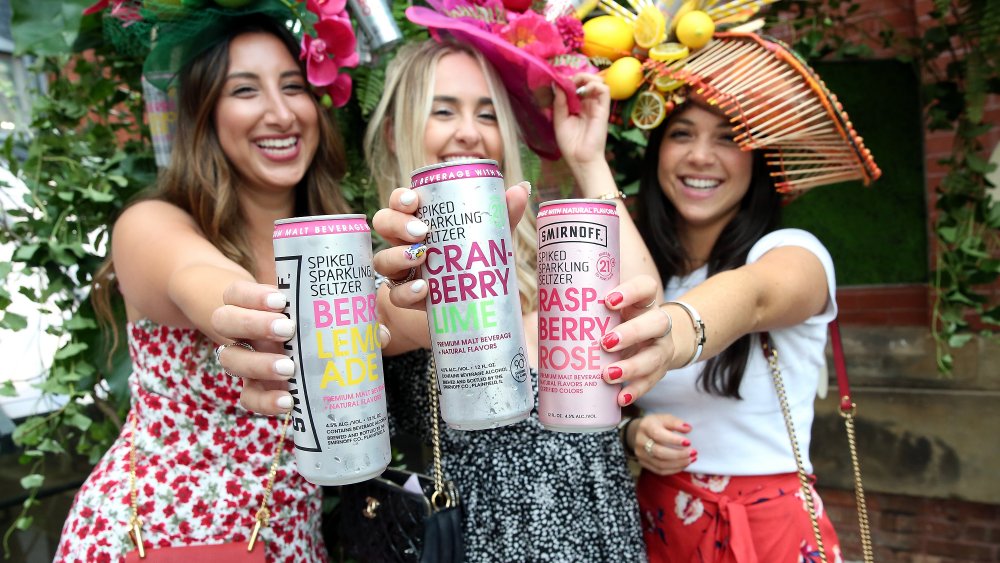Food Trends That Are About To Take Over 2020
Welcoming in 2020 isn't just welcoming in a new year, it's kicking off a whole new decade. And when it comes to trends, well, the trends of 2020 have a huge responsibility.
Think of it this way — decades are defined by their trends, food and otherwise. When someone says something about disco or grunge music, Jell-O mold desserts, Funfetti frosting, or cake pops, there's really no mystery about what decade they're thinking of, is there?
That makes 2020 something of a chance for a reset. We can ignore the celery juices and juice cleanses, forget about Popeyes' chicken sandwich, and stop making those sugar-laden freakshakes, already. We can usher in a whole new era of food trends... but are we going to make those trends healthy ones? Delicious ones? Ones we're all actually going to want to voluntarily join in on?
Let's talk 2020 food trends, and find out what the experts think we're going to be seeing in our social media feeds once the new year arrives.
Seaweed will be popular in 2020
Seaweed has been a dietary staple for a long, long time, but according to analysts at NPD Group (via The Huffington Post), 2020 is going to be the year when seaweed becomes more than just a staple for certain parts of the world. They say not only is it one of the fastest-growing trends in restaurants, but you're going to be seeing more and more seaweed-based snack foods, like chips, claiming valuable shelf space in grocery stores across the country.
Seaweed has a lot going for it, and they're all things that are going to help make it trendy.
First of all, it's good for you. Healthline says it's been linked with supporting thyroid function and gut health, as well as being a good source of vitamins and antioxidants. Mara Seaweed says it's also completely sustainable, grows without using resources needed by other crops, grows very fast, and removes CO2 from the atmosphere.
It's no wonder that Prepared Foods is calling seaweed 2020's hot ingredient; while it's been a staple since ancient times in places across Asia and the Mediterranean, it's never been what you'd call trendy. But that might be changing, especially as social media looks for the next good-for-you, good-for-the-planet, good-to-be-seen-eating food for the decade.
Jackfruit is about to be the fruit of 2020
What is jackfruit? According to the global hospitality firm Benchmark, you better figure it out, because it's going to be a hot item in 2020.
It's no secret that plant-based meat alternatives have been big, and it's likely they'll continue to rise in popularity. Jackfruit is among those, and if you haven't heard of it (or tried it) yet, it's pretty cool.
A single jackfruit can weigh up to 100 pounds (although 10 to 25 pounds is more average, says Forbes). It's traditionally found in Southeast Asia and the Pacific, you can use the fruit, leaves, and seeds, and it's incredibly versatile.
You can eat jackfruit raw, dry it, fry it, turn it into jam, or, when it's prepared the right way, it's a strangely accurate substitute for pulled pork. It's also pretty good when it comes to substituting for something like mutton, and in Bengali households — where it's been used as a staple for generations — it's even known as "tree goat."
It gets better: jackfruit is low-calorie, low-carb, high in protein, fiber, and vitamins. It's also a hardy crop that requires little irrigation.
Just think of those super-creative, jackfruit tacos, sliders, and bowls just waiting to be made, photographed, and put on Instagram!
Oat milk will be 2020's biggest non-dairy milk option
Go to any coffee shop worth their salt and you'll find at least a few non-dairy milk options. Soy milk and almond milk are pretty popular, but according to Bloomberg, oat milk is poised to be the next big thing in non-dairy milk for 2020.
They're basing a large part of that on Oatly, a massive Swedish company who have recently invested $15 million in opening an oat processing plant in New Jersey. Between 2017 and 2019, oat milk sales have jumped from $4.4 million to $29 million. Given those numbers, it's no wonder Oatly decided to hop on this bandwagon and even kick-start a program encouraging Midwestern farmers to grow oats as well as the more typical corn and soy crops.
They're not the only game in town and other beverage manufacturers are gearing up to release their oat milk offerings, which experts say is just another way plant-based foods are moving into the more mainstream market.
Even Chobani will be entering the oat market starting in January 2020, says One Green Planet, with a line of yogurts and oat "drinks."
Sparkling water is off to a running start for 2020
In August 2019, Nielsen found (via The Washington Post) that the previous years' retail sales figures for sparkling water had reached $2.45 billion — and they were still climbing. According to them, it's a huge market with an even bigger potential for growth; if you think you've seen a lot of sparkling water on shelves in 2019, buckle up, because there's going to be even more in 2020.
Coca-Cola is going to be officially entering the market with a flavored seltzer called Aha, and they're definitely not the only new players in the game. Coke isn't exactly trendy, after all, so how do you make sparkling water super trendy? You pick up bottles from smaller companies like Richard's Rainwater. That's exactly what it sounds like: it's rainwater collected, carbonated, then sold in bottles (because, their CEO told The New York Times, their water was so pure they couldn't use cans without changing the taste).
There are fruit waters and flavored waters, sure, but companies are experimenting with infusing their waters with everything from vitamin C and electrolytes to CBD oil. They're marketing them as healthy — and they're definitely better than sugar- and calorie-filled sodas.
Even the most stalwart critic has to admit this market segment has the packaging thing down pat. What could possibly be more trendy than that?
Canned wine and cocktails will get even bigger in 2020
It wasn't that long ago that we all thought the right way to drink wine was from a bottle that had a cork. Then there were screw-tops, and then there was (gasp!) boxed wine. We eventually realized there was really nothing wrong with that, and now, we're starting to see a new trend: canned wine and cocktails.
According to Global NewsWire, we might not just be on the cusp of a trend for the year — they're looking at a decades-long trend that's going to see canned cocktails increase exponentially in popularity. The front-runners are expected to be canned cocktails with fruit additives, and they're going to be neck-and-neck with canned cocktails that come with caffeine.
And according to The Atlantic, canned cocktails are pretty much the perfect fit for millennials. They're convenient, recyclable, and they're much cheaper than getting a drink at a bar.
And strangely, it's a case of technology and demand converging. Pre-making cocktails and storing them in cans has been difficult — well, if you want them to taste fairly freshly-made when they come out, at least. It's only in recent years that packaging technology has advanced to the point where it's possible, and the fact that many of these cocktails are delicious, low-alcohol, and low-sugar means they're a win all around — and that they're only going to get bigger.
Throw on some very Instagrammable packaging, and you've got one of 2020's boozy food trends.
Meat-free meat has its eye on 2020
For a long time, there were meat burgers and then there were veggie burgers. Veggie burgers weren't just vegetarian, they had an inevitably weird texture and they were, well, strange.
Things have started changing in recent years, with the creation of products like the Impossible Burger and Beyond Burgers. They've managed to do something most veggie burgers have failed at, and that's to taste like something you'd actually want to eat.
And that's important. Like vegan activist Ed Winter told CNBC, it's not about getting people to become vegan, it's about getting the options out there.
According to Vox, the meat-free burger industry is ending 2019 with a lot of people still on the fence, and it's entirely possible this could go either way. But according to The Washington Post, cattle ranchers are worried.
Meat-free burgers are turning into a very real threat. Companies that have traditionally dealt in meat — like Smithfield Foods, Perdue, Nestle, and Tyson — are working on their own meat alternatives.
More restaurant chains — like Burger King, White Castle, Carl's Jr., Hardee's, Subway, Wendy's, and Dunkin' — have either introduced meatless "meat" products or announced they're working on it.
Morningstar has said they'll be completely vegan by 2021, and among it all, there's still a lot of debate. Are plant-based burgers healthier, or are they just more highly processed and, well, not that great? That's a conversation still to come, and as they continue to get more and more trendy, we'll be hearing more about it in 2020.
Entirely plant-based diets will be more popular in 2020
In 2020, people are likely going to continue the trend of replacing their burgers made with cows, chicken, and turkey with plant-based alternatives. And that's not all that's going to happen as far as changing the way we eat — according to experts from Boston, going entirely plant-based will be more and more trendy.
What does that mean? We're going to see hashtags popping up in 2020 that describe dishes made with things like nuts, legumes, and whole grains, and some grocery stores are already ahead of the game. Think of options like Trader Joe's cauliflower gnocchi, and their pizza crusts made from veggies.
Making the switch to veganism is tough, but the Association of UK Dieticians says there are other options — lacto-ovo vegetarians, for example, don't eat meat, poultry, or seafood, but they do eat eggs and dairy.
There are a ton of options out there, and if there's anything that people love to do, it's hop on board with this diet or that one. Fitt says there are more and more people doing just that. Between 2016 and 2019, there's been a 600 percent increase in the number of Americans who identify as vegans. With a wider availability of plant-based meal options from breakfast sandwiches to gnocchi, you'd better believe it that more and more people are going to be sharing photos of their plant-based meals on Instagram.
Reusable straws will see more victories in 2020
It's becoming more and more well-known just how bad plastics are for the environment, and one of the easiest ways to make a difference is to skip on the plastic straws. According to The New York Times, it's no longer a matter of just skipping straws. While many restaurants and fast food chains have made the switch to paper straws, well, they're kind of terrible, aren't they?
Enter the reusable straw. Everyone's making them, from brand new, grassroots companies on Kickstarter to Tiffany & Company. And that's real — their bendy straws will set you back a few hundred bucks, but they're gold and silver, so there's that.
There are a ton of other options, though, and some of them are surprisingly neat. Many come with their own carrying cases, they come in a myriad of colors and patterns, and there's even heat-resistant ones for the coffee lover. They come with cleaning kits and brushes, they come straight or bendy, and some are big enough to handle the most stubborn milkshake.
There are even disposable but plastic-free straws made to be biodegradable and compostable, says CNet, so whatever you prefer, there's an option out there. And that's a good thing. Straw shaming is actually a thing on social media, so it's only a matter of time before these trendy, eco-friendly straws go super trendy as 2020's answer to reusable water bottles.
You'll hear a lot about mukbang in 2020
What is mukbang? It's one of those things you've probably seen pop up in a list of suggestions from YouTube, and you may have seen it in social media feeds. After starting in South Korea some time around 2008, it's getting more and more popular, Self says.
Weirdly, hypnotically popular.
Essentially, they're videos of someone eating a lot of food. That's it. Usually there's some over-dinner sort of chat, there's a lot of mouth noises, and... that's pretty much all there is. And it's only getting more popular, to the point where 2020 is likely to see this internet oddity go much more mainstream.
In late 2019, The New York Times did a profile on one mukbang star named Bethany Gaskin. She was celebrating her 1 millionth subscriber on YouTube, and her videos had also made her a millionaire. (She describes it as "a ministry.")
So, why would anyone want to watch someone stuff their face very, very noisily? There are a few things at work here, and they're all combining to make these insanely trendy.
Shenandoah University physiology professor Craig Richard says that for some people, it's a sensory experience that causes the "brain tingles" associated with ASMR. But others say there's something else at work. With many people finding themselves eating alone, putting on a mukbang can simulate conversation over dinner — and that can be a rewarding thing.
Alternative flour will be the baking trend of 2020
No grocery store is trendier than Whole Foods, and they get that reputation by having their finger on the pulse of social media. What do they see as being ultra-trendy in 2020? Alternative flours.
And what on earth does that mean? They say (via Business Wire), bakers are going to start seeing way more than just a few types of flour. Where the trendiest of stores are already offering things like tortillas made with tigernut flour, 2020 is going to bring tigernut flour itself to shelves and bulk bins.
You'll see more pastries and cookies made with seed flours, for example, but you'll also have the chance to experiment and make your own. Always wish you could make your own pizza crust with cauliflower flour or cookies with banana flour? That's a thing, and Whole Foods says it's going to be not just trendy but becoming widely available in 2020.
That's pretty exciting for bakers, and it's going to fill your social media with protein- and fiber-boosted treats made with exotic flours from around the world.
Who can't get on board with that one?
Butters and spreads will be the best thing to happen to bread in 2020
Whole Foods also says (via Business Wire) that 2020 might just be the best thing to happen to breakfast and snacking in a long, long time. Why? Butters and spreads are poised to not just take over grocery store shelves, but to get really, really wild.
We're used to peanut butter and even almond butter, but how about pumpkin butter? Chickpea butter? Watermelon seed butter?
Heck yes.
This one's going to go hand-in-hand with something we've already seen a lot of, and that's different types of diets. Butters suitable for vegans, for those on a keto diet, or those on a paleo diet — they look pretty different than what's mainstream in 2019, but Whole Foods thinks that's going to change. And that's great for the rest of us.
It's going to up our bagel game, make toast way more interesting, and you know that one person that always brings a veggie platter to a cookout or a football game? They're going to be bringing along some fun butters and spreads that are going to make even the most stalwart carnivore reach for the celery.
Spiked seltzer will really explode in 2020
Sometimes, food trends don't appear out of thin air. Sometimes they continue an already meteoric rise in popularity, and that's going to be the case with spiked seltzers.
According to Business Insider, the spiked seltzer market was worth around $550 million by the end of 2019, and that's not too shabby at all. But analysts say that's just the start of things, and by the time 2021 rolls around, they're estimating it's going to be worth a whopping $2.5 billion. That's a lot of growth in a relatively short time, and that means a lot of Instagram photos.
White Claw is leading the way, and at the end of 2019 they clocked an impressive 223 percent growth. They're not the only ones in the game, and even Anheuser-Busch has said that it's something they're taking it very seriously, because it's on the market to stay (via Vox) — their Bud Light Seltzer hits the shelves in January 2020.
But here's the hilarious thing — spiked seltzer is not new. If you're of a certain age, you might remember Zima. It was briefly a thing in the 1990s, and even though it sold decently well, it was publicly ridiculed. It was essentially spiked seltzer, but it was never cool or trendy. It disappeared in 2008 (although you still might find it in Japan), and it wasn't until the recent rebranding of the product as "spiked seltzer" that it became ridiculously trendy.
Sorry, Zima. It turns out the world just wasn't ready for you, and that's not your fault.
